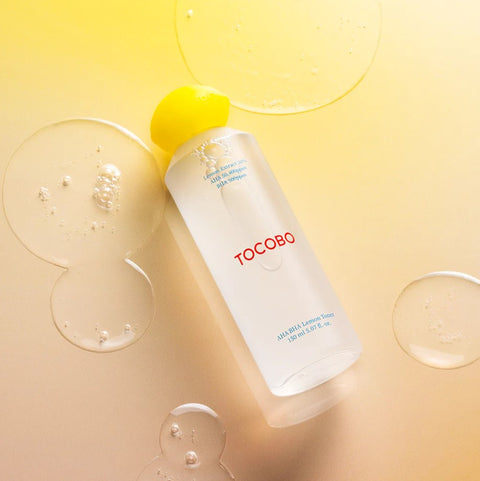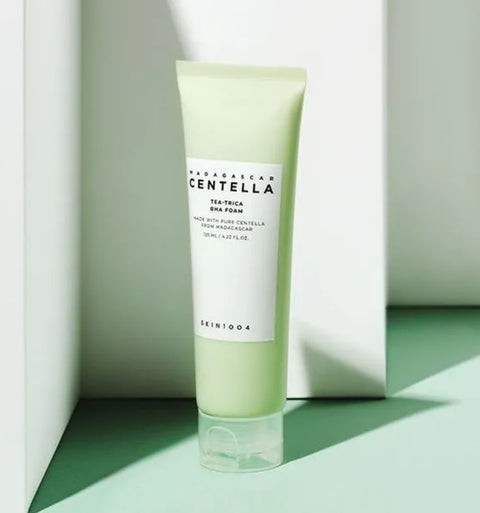Sunshine is wonderful and has many benefits, but as almost everyone already knows, it also has its dangers and disadvantages. In this article, we discuss the correct use of sunscreen, we shed light on the biggest myths regarding the use of sunscreen, and how you can best protect your skin.
Korean sunscreens have gained popularity all over the world thanks to their innovative, light and skin-improving compositions and effective UV protection factors. Shop sunscreens now >>
![[House of HUR] Weightless Sun Fluid](https://cdn.shopify.com/s/files/1/0550/1927/4448/files/house-of-hur-weightless-sun-fluid-6_480x480.jpg?v=1697482277)
Why using sunscreen is important (even if your skin doesn't burn easily)
If you want to take care of your skin, using sunscreen is essential for your skin's health. UV radiation can damage skin cells, cause premature aging and increase the risk of skin cancer. Plus, not wearing sunscreen means you're missing out on many of the benefits of your skin care products. Not only will your skin suffer more damage from the sun if you leave it unprotected, many of your skin care products would also benefit from filtering UV radiation from the skin. If you use AHA acids in your skin care routine, such as glycolic or lactic acids, you should always remember to protect your skin from the sun, because the acids make the skin more sensitive to the sun.
Many people mistakenly believe that they should only use sunscreen if their skin burns easily in the sun or if they are in direct sunlight for long periods of time. However, using sunscreen is important for everyone, whether they burn easily or not. Even if your skin doesn't burn, the sun's UV radiation still damages the skin all the time; you may just see the effects much later.
What effect does the sun have on skin aging?
Sunlight is one of the biggest factors that affect skin aging and most importantly; the effect of which would be easy to minimize.
The sun's UV radiation consists of UVA and UVB rays, which penetrate the different layers of the skin and can cause damage at the cellular level. UV radiation also promotes the formation of free radicals, which in turn damage skin cells and collagen fibers. This leads to skin sagging, wrinkles and pigment changes.
Collagen breakdown
Collagen is the protein that gives the skin its elasticity and flexibility. UV radiation breaks down collagen fibers in the skin, which leads to sagging of the skin and the formation of wrinkles. This process happens over the years and makes the skin look older than it actually is.
Pigment changes
UV radiation from the sun can cause pigment changes in the skin, such as dark spots and darkening of the skin. This is because UV radiation stimulates the production of melanin in the skin, which can cause uneven skin tone and skin discoloration.
![[Tocobo] Cotton Soft Sun Stick](https://cdn.shopify.com/s/files/1/0550/1927/4448/products/Tocobo-Cotton-Soft-Sun-Stick-2_480x480.jpg?v=1679044621)
Why would I need sunscreen when my skintone is brown/black?
Although dark skin has a natural protection against the harmful effects of the sun thanks to a higher amount of melanin, it does not offer complete protection against UV radiation. Melanin is the pigment that gives the skin its color, absorbs UV radiation and helps prevent radiation from penetrating into the deeper layers of the skin. This explains why dark skin burns less often and more slowly than light skin.
However, UV radiation can still cause damage to skin cells and increase the risk of skin cancer even for darker skin types. Pigmentation and dark spots are also one of the most common skin problems caused by the sun, even for dark skin, which could easily be prevented by using sunscreen.
What does the PA label mean in Korean sunscreens?
You are certainly familiar with the SPF, UVA and UVB markings on sunscreens, but you will also find the marking PA on Korean sunscreens.
PA stands for "Protection Grade of UVA". It is a scale that measures a sunscreen's level of protection against UVA rays, which are linked to premature skin aging and other harmful effects. UVA rays are longer than UVB and cause less burning, but they still have a significant effect on e.g. skin aging.
The PA scale classifies sunscreens into four different levels: PA+, PA++, PA+++, and PA++++. The higher the PA value, the better the sunscreen's protection against UVA rays.
PA+: weak UVA protection
PA++: moderate UVA protection
PA+++: good UVA protection
PA++++: excellent UVA protection
By combining a high SPF and a high PA value, comprehensive protection for the skin from the harmful effects of the sun is ensured.
![[Beplain] Clean Ocean Non-Nano Mild Sunscreen](https://cdn.shopify.com/s/files/1/0550/1927/4448/products/1000000060_detail_198_480x480.jpg?v=1701794232)
The most common sunscreen myths
Especially on social media and forums, you often come across claims about the use of sunscreens, which are just myths. We solved the most common ones here.
Myth: Chemical sunscreen should be applied to clean skin
You may have come across the claim that chemical sunscreens must be applied to clean skin and allowed to absorb in order to work. This is not true, chemical sunscreens work just as well on top of other products as well.
Sunscreen works best when it is applied in an appropriate amount (meaning enough) on an as even surface as possible, and after application the skin is not touched unnecessarily. For this reason, all skin care products should be added before sunscreen.
It is also recommended to avoid excessive rubbing of the sunscreen on the skin, so that you do not accidentally reduce the effectiveness of the sunscreen. Spread the product evenly on the skin and let it settle.
Myth: Sunscreen needs to be absorbed into the skin before it works
This is actually not true. Sunscreen should be applied before going outside, but no cream needs time to activate. The traditional 15-minute waiting time recommendation is based on the fact that the cream needs time to settle on the skin and is not e.g. wiped off with your clothes or movements
If you apply makeup after applying sunscreen, you should let the sunscreen set properly for about 5-10 minutes before adding makeup. This way you make sure that you don't accidentally wipe off all the sunscreen you just added.
Myth: The SPF of a foundation is enough to replace sunscreen
Sunscreen should be added to the skin at 2 mg per square centimeter so that the protection factor corresponds to the amount stated in the product. This amount in a foundation is so large that in reality, probably no one uses that much foundation on their face. In other words, since you use much less foundation on your face than sunscreen, you probably won't get anywhere near the protection indicated on the jar. The sun protection factor of foundations is rather an excellent addition to the sunscreen.
![[SKIN1004] Centella Hyalu-Cica Water-Fit Sun Serum](https://cdn.shopify.com/s/files/1/0550/1927/4448/files/skin1004-centella-hyalu-cica-water-fit-sun-serum-texture_480x480.jpg?v=1697839768)
Myth: The SPF label on a moisturizer is not as protective as a real sunscreen
Have you ever tried moisturizing Korean sunscreens (hello Round Lab Birch Juice Moisturizing Sunscreen)? If you have, then you know that in a blind test you probably wouldn't be able to tell the difference between a sunscreen and a traditional face cream.
Sunscreen and moisturizer are basically the same thing, as long as you add a large enough amount and the face cream has a high enough SPF for your needs.
Myth: The protective effect of sunscreen disappears within 2-3 hours
Sunscreen protection does not just evaporate off of your skin. The reason why it is generally recommended to add sunscreen every 2-3 hours is that when you move, sweat, wear clothes and just because your skin produces sebum, the surface of the sunscreen becomes uneven over time. Part of the sunscreen also always evaporates from the skin and is absorbed into the skin, causing the protective layer to become thinner. All this leads to the fact that the sun protection is no longer uniform, but it becomes thinner and gaps are formed in it, so the skin is no longer as well protected.
Sunscreen should therefore always be added every two hours, starting from when the cream is applied to the skin, not counting from how long it has been in the sun.
Myth: Physical sunscreens work better than chemical ones
The effectiveness of sunscreen depends only on the protection factor it offers and correct use. Whether you choose a chemical or physical sunscreen depends entirely on your own preference - you can always find the most suitable product for your skin and preferences only by testing.
Myth: Physical sunscreens are more natural than chemical ones
Physical sunscreens are also processed, and they are not much more natural than chemical ones. Synthetic ingredients are often added to so-called mineral sunscreens so that their composition is not lumpy and they spread evenly on the skin. Potentially skin-irritating ingredients in chemical sunscreens are mainly a problem only in formulations available in the US market.
In Korean sunscreens, you can often find so-called hybrid protection, which combines both chemical and physical sun protection. In this way, the best aspects of both can be combined; the lightness of chemical creams and the light pore-smoothing effect brought by physical ones.
Myth: Sunscreen should also be worn indoors
Most people do not need sunscreen indoors, as window glass filters most of the UV rays. Only if you spend most of the day next to a window or your house has large skylights, is it recommended to use sunscreen to prevent premature signs of aging.
Myth: Nano-particles in physical sunscreens are dangerous for the body
Partly true. Nanoparticles (particles of the nanometer class) of zinc oxide and titanium oxide can potentially cause reactions in the body, especially when combined with UV. However, so far in the studies, these nanoparticles have not been able to penetrate the skin very deeply, only in the uppermost dead epidermis layer of the skin. However, it is theoretically possible that they could be absorbed deeper if skin is broken, but there is no detailed research information on this yet and for now these are considered safe to use.
![[House of HUR] Weightless Sun Fluid](https://cdn.shopify.com/s/files/1/0550/1927/4448/files/house-of-hur-weightless-sun-fluid-3_480x480.jpg?v=1697482277)

![[About Me] Rice Makgeolli Cleansing Foam](http://www.yeppo.fi/cdn/shop/files/about-me-rice-makgeolli-cleansing-foam-2.jpg?v=1704326845&width=480)

![[Anua] Peach 70% Niacin Serum Mask](http://www.yeppo.fi/cdn/shop/files/anua-peach-70-niacin-serum-mask-3.jpg?v=1703796396&width=480)





 info@yeppo.fi
info@yeppo.fi
 14 vrk palautusoikeus
14 vrk palautusoikeus
 PCI-DSS Compliant
PCI-DSS Compliant
 PayPal Buyer Protection
PayPal Buyer Protection
 Klarna – Pay Securely
Klarna – Pay Securely